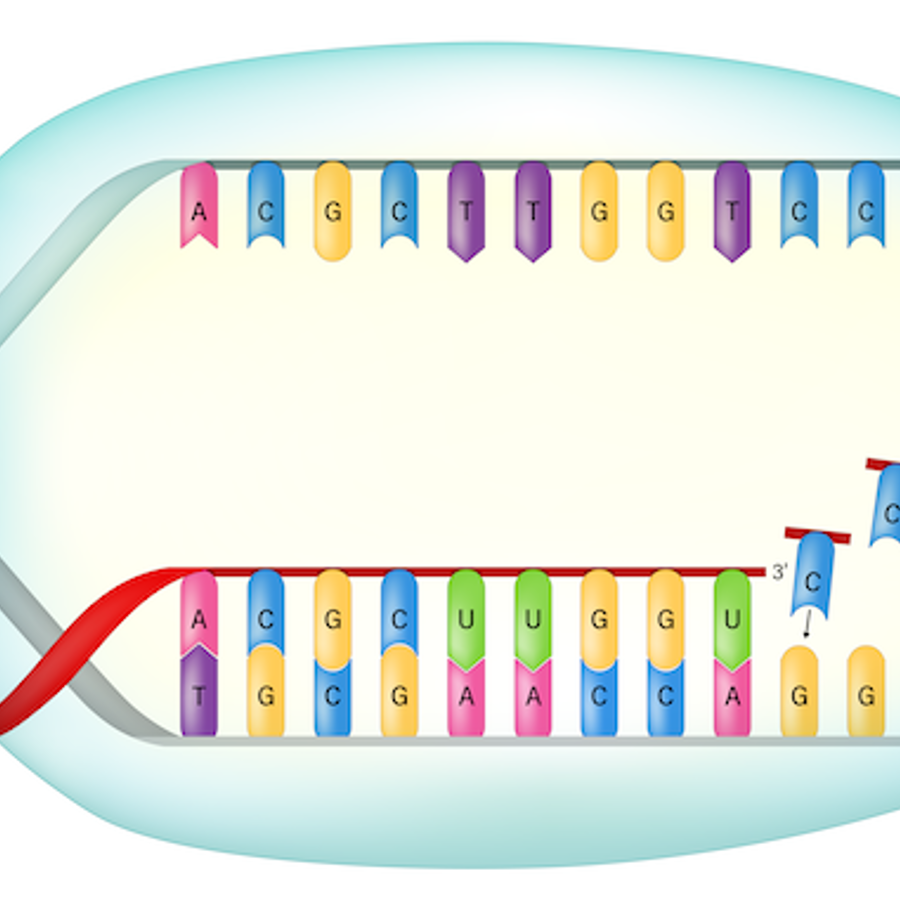
How does the protein that transcribes DNA into mRNA know where to start and end?
May 19, 2023

- Related Topics:
- Transcription and translation,
- Genes to proteins,
- Gene expression,
- Noncoding DNA
"A curious kid" from California asks:
"How does the protein that transcribes DNA into mRNA know where to start and end?"
Great question! The short answer is that there are special sequences on our DNA that indicate where to start and stop for a specific gene.
Before we dive into the nitty gritty details, let’s back up a bit. Each person has a lot of DNA. It’s basically the entire cookbook to make a person!
Research on the human genome has found that we have around 20,000 genes encoded in our DNA! That includes genes for eye color, making muscles, building nerve cells, and so much more.
So, does it seem likely that every gene is getting used all the time?
If you answered “no way!” then you are right. Some genes are only needed at certain times in life, like while a baby is first developing or during puberty. Other genes are needed only in certain parts of the body. For example, you can imagine that the genes that help you see color aren’t very helpful in your leg.
Figuring out where to start and stop reading a gene and determining when and where to use it are very important. And your cells do this in a bunch of different ways.
Figuring out where to start and stop
DNA is copied to RNA in a process called transcription. You can think of it like copying a recipe out of a recipe book. The book stays in your kitchen, but you give the copy to your friend to use whenever they like!
Later, RNA is read and turned into proteins in a process called translation. That is like when your friend reads the recipe you sent and uses the instructions to make cookies.
Together, transcription and translation are critical to all of our cells having all the proteins they need to do their jobs! Let’s take a little deeper look at transcription.
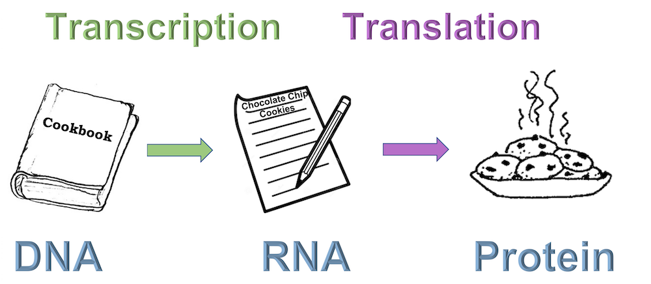
The protein that transcribes DNA into RNA is called RNA Polymerase. And one of its important jobs is recognizing where to start and end. Polymerase scans along the DNA until it finds a specific “start here!” sequence called the promoter. Then it goes to work copying the DNA to RNA. It keeps going until it reaches another special “all done!” sequence called the terminator. When it reaches the terminator, polymerase knows it is time to stop.
Say one of your friends that lives in another state loved your cookie recipe. You would open your recipe book and flip through the pages until you found the cookie recipe. That is like RNA polymerase scanning the DNA until it finds the promoter! Then, you would start copying the recipe on that page, just like RNA polymerase copies DNA to RNA.
You would stop when you reach the end of the recipe, where it says “Enjoy!”, just like RNA polymerase stops at the terminator. Then, you can send the recipe to your friend to make wherever they want without having to send your whole book!
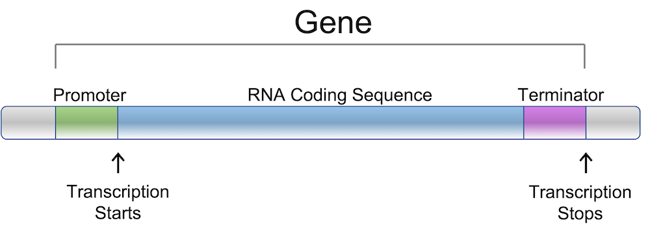
Turning genes on and off
I mentioned earlier that not all genes are used all the time or in all our cells. That means there has to be a way for polymerase to know when to transcribe a gene and when to ignore it.
So how do our cells do it? Well, we have a whole lot of DNA that doesn’t code for a protein at all! In fact, only about 1% of our DNA actually contains a gene to turn into a protein. The non-coding parts of DNA have other useful information, including information that will help polymerase know which genes need to be copied and which ones it can skip.
Special proteins can attach to these extra parts of DNA that are close to a gene and can help flag-down RNA polymerase and say “this one is important” or wave RNA polymerase on and say “we don’t need this gene right now”. These proteins are called transcription factors.
Turning a gene off
One type of transcription factor is called a repressor. This is the type that tells polymerase that the gene isn’t needed right now and to go on to the next gene. They work by blocking the promoter so that polymerase can’t bind to start transcribing the gene.
Some repressors entirely turn off a gene, preventing polymerase from getting to it at all. You can think of it like gluing two pages of your cookbook together, you would never be able to get to the recipe on that page, even though it is still there!
Other repressors only make it a little harder for polymerase to bind, kind of like attaching two pages in your cookbook with a paperclip. You can still get to it, it just might be a little harder. In that case the gene would still be used some, but not as much.
Turning a gene on
Other transcription factors can help to flag down RNA polymerase to come and transcribe a gene. Kind of like if you were to put a sticky note on your brownie page. It makes it easier to flip to the next time! These kinds of transcription factors are called activators.
Some genes have multiple activators. Sometimes this means that each activator makes it slightly easier for polymerase to work, so that more activators mean more transcription. In other cases you might need a few specific activators to be present before polymerase starts at all.
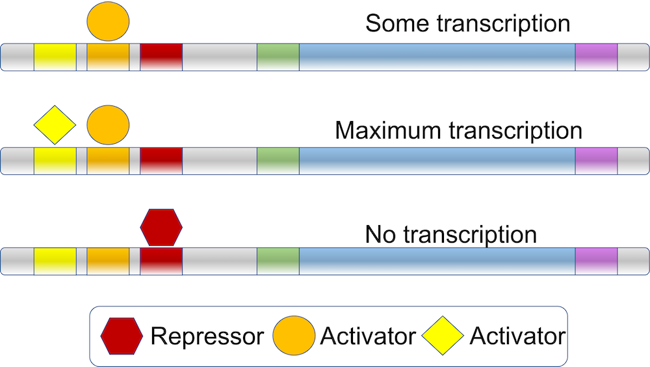
Conclusion
We have discussed a few ways our cells know how and where to use genes, but there are many other ways that our cells do this throughout our lifetime. The things we discussed here are only a few of the many ways our cells know what genes to use and when.
So, let’s review.
Not all of your DNA is needed at any given time or in all the cells in your body, so your cells have lots of different ways to control when and where to use each gene. There are specific sequences that tell polymerase where to start and stop reading genes.
There are also other factors that influence how much each gene gets used. Together, these processes form the basis of what genes are transcribed for different parts of our body and different times of our life!
Read More:
-
Khan Academy: Transcription factors
-
Khan Academy: Regulation of transcription
-
Amoeba Sisters (Youtube): Gene Regulation and the Order of the Operon
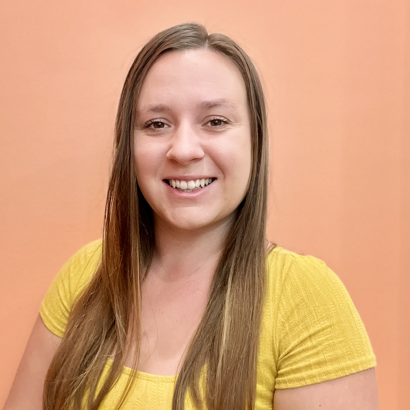
Author: Kristi Bartholomay
When this article was published in 2023, Kristi was a Master’s student at Stanford in the Department of Epidemiology conducting neuroimaging studies of girls with Fragile X Syndrome in Allan Reiss’s Division of Interdisciplinary Brain Sciences. Kristi wrote this answer while participating in the Stanford at The Tech program.
 Skip Navigation
Skip Navigation
